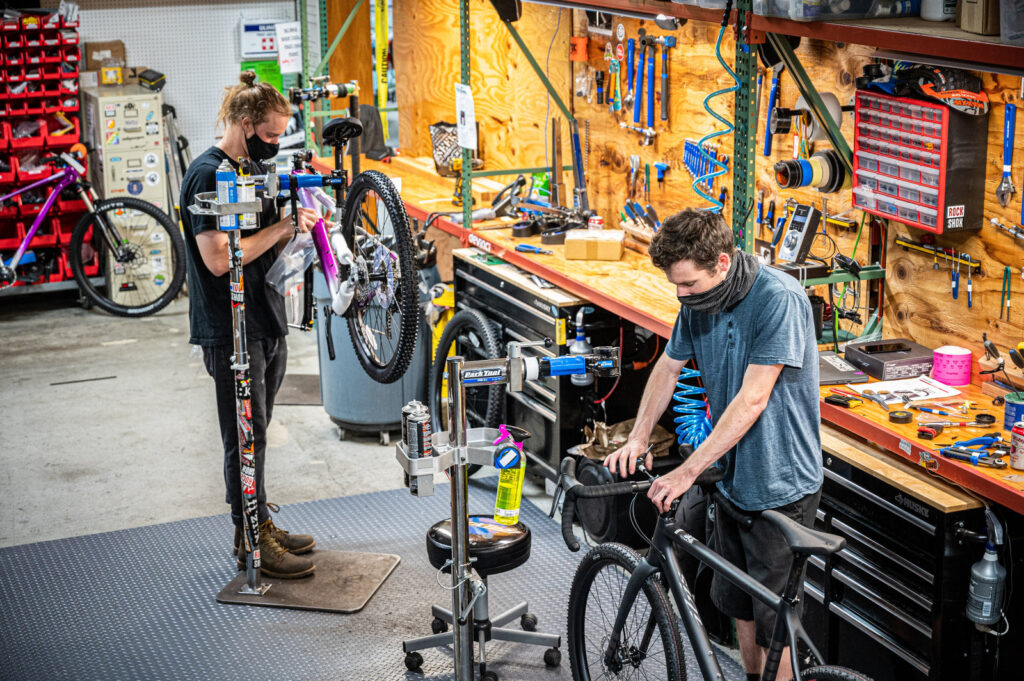Are you getting everything right at your bike repair shop?
Although things might look good to you on the surface, there are often hidden challenges associated with repairs. Starting from a small store and few tools, you gradually have to work your way up to becoming an established business. So, it’s important to avoid common mistakes that could slow you down.
Running a Bike Repair Business: Mistakes to Avoid
Many bike repair firms close not from lack of demand but rather from preventable mistakes. Not knowing the local market is the most harmful error. Many business entrepreneurs believe that every area with bikes will back a repair shop. Actually, successful companies conduct thorough market studies to know their consumer base. They find out if local riders choose casual urban cruisers, mountain bikes, or high-end road bikes. One thing we know for sure is that you must invest in a bike shop POS software that helps automate your operations.
Underpricing services is another frequent error. Many new store owners think that by providing lower prices, they can improve competition. Although it might draw consumers at first, it produces unworkable margins. Successful stores emphasize value above affordability. They describe the caliber of service, provide assurances, and foster consumer loyalty by means of consistency.
Neglecting to monitor repairs, customers, and inventories using appropriate procedures is a major operational error. As the company expands, depending on paper tickets or spreadsheets gets too much. Successful repair companies run on point-of-sale systems designed for repair shops. These technologies streamline ticketing, maintain inventories, and assist control consumer data. Companies that ignore these technologies frequently experience disappointed consumers and lost income.
Essential Inventory Items for a Bike Repair Company
To meet all kinds of cyclists, a bike repair business has to keep a well-rounded inventory. Profitable companies usually have the necessities in stock. Non-negotiable are tubes and tyres of different sizes. Among the most common maintenance requests are flat tires, hence it’s vital to have a variety of choices for road, hybrid, and mountain bikes.
Another need are brake wires and pads. These wear out frequently, and consumers want fast replacements. Carrying rim brake parts as well as disc guarantees adaptability. Especially in regions with heavy bikers or competitive riders, chains, chainrings, and cassettes also experience consistent demand. Maintaining the store ready for any bike by stocking high-quality components for both new and vintage drivetrains.
Equally crucial is a consistent choice of degreasers, cleansers, and lubricants. These aren’t only for in-shop use; bikers often buy them to keep their bikes between servicing. Stores that maintain brands consumers trust—like Muc-Off, Finish Line, or Park Tool—generate additional income by selling goods.
While stores have to have replacement components for particular repairs, having good tools is a given. There must be spokes, nipples, bottom brackets, and derailleur hangers. Stores that regularly run short of essential parts lose both reputation and money. Software for repair shops can help businesses avoid stock-outs and increase restocking effectiveness.
Trends of Failing Bike Repair Companies
Although every company is unique, several trends show up regularly in stores that close or struggle. Lack of returning consumers is one of the major warning signs. No returns from consumers sometimes indicates a bad experience, price issues, or subpar work. Successful stores emphasize connection development and providing good, memorable service.
Overreliance on repair work by itself is another trend. Repair margins are decent, although they may be seasonal. Stores that don’t branch out into maintenance packages, rentals, or accessory sales usually struggle with cash flow in off-peak times. Successful companies generate several income sources to offset seasonal declines.
Many companies are also doomed by poor financial management. Shop owners who don’t monitor expenses, neglect reasonable pricing, or overlook payroll costs usually find themselves in difficulty. Successful companies track important KPIs, make financial forecasts, and change their operations as needed. They price their services to show both expertise and overhead, plan for sluggish months, and invest revenues sensibly.
Eventually, absence of community participation results in stagnation. Successful companies fit into the local cycling network. They engage in environmental projects, run seminars, and support local rides. Community involvement fosters brand loyalty and natural marketing. Many failing stores ignore long-term visibility and concentrate only on daily repairs, therefore isolating themselves.
Key Takeaways
Building a successful bike repair company depends on more than technical ability. It calls for focus on community development, marketing, inventory control, and customer service. Business owners can set themselves for long-term success by steering clear of the usual traps—such as underpricing, ignoring systems, and disregarding brand development. Keeping the correct inventory and spreading income sources helps even more to support the company.
Conversely, companies that neglect consumer input, lag behind on technology, or mismanage their finances usually do not last. Examining both successful and failing stores reveals obvious lessons. Strategic planning, customer emphasis, and change adaptation define success. A bike repair shop can not only survive but flourish in a competitive market with the correct attitude and mechanisms in place.
Meta:
One of the common traits seen in thriving bike repair businesses is the use of technology in the form of bike shop POS software.






